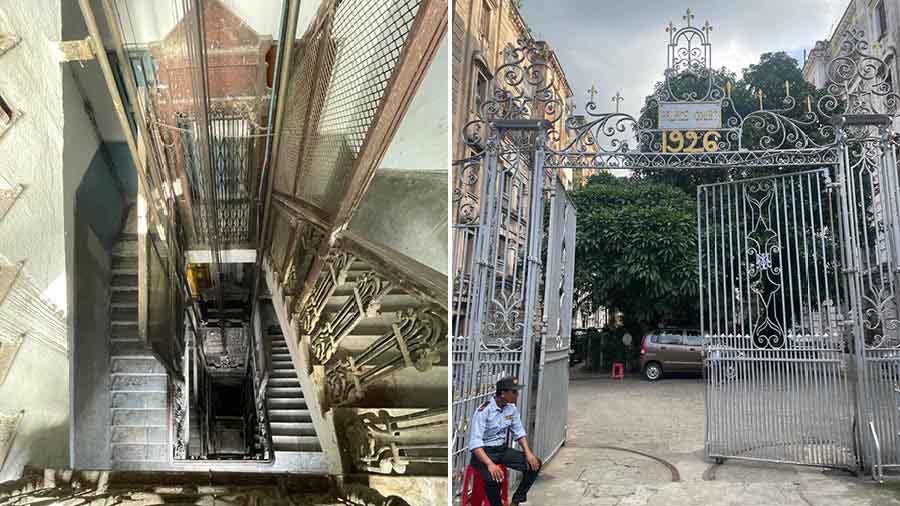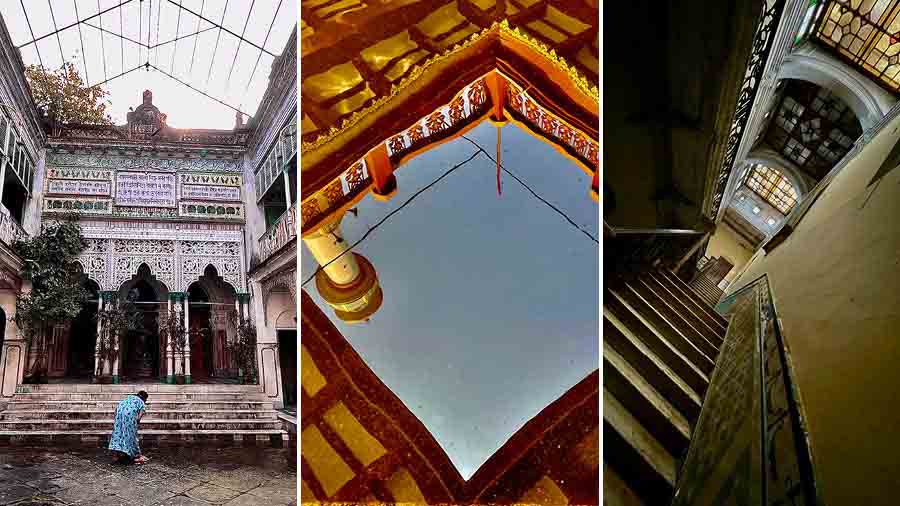Continued from here.
I ventured to write about the grand mansions in which the British lived a century ago. This took me to the 97-year-old Palace Court on Kyd Street. I figured that if I got a few pictures, did a brief walk-around, sponged the flavour in a few minutes of polite nodding, I would be good to go for 200 words.
I did an impromptu rethink after meeting the 78-year-old Vien Singh, a tenant. And here lies the irony: most of us live in miniscule but owned apartments, while every person inside the sprawling Palace Court lives kingly, but pays a nominal un-indexed-to-inflation rent (which explains why the elevators are missing in shafts, the place could do with some Berger and the grills could be de-rusted).
Most tenants would agree that rents need to be raised but if they did so, the landlord would pocket all the cash and the maintenance would just be as it was; the landlords feel that the cash flow only happens when an apartment changes hands and a ‘salaami’ (I love the word) needs to be paid, making possible some nominal upkeep. There is a trust deficit in some of the handsomest properties in the city.
But I am getting ahead of my story. The reason for my singling out Palace Court is for its relaxed splendour, despite the cobwebs. There is a mohabbat with which this property was designed by an architect called Mr Myers. If architecture could speak, the diction of Palace Court would be the elegance of Cardus romanticising a cricket match; if architecture could be composed, the property would be western classical. You get the idea.
Even my untrained eyes pick the nuanced differences of Palace Court from my pedestrian living. The ceiling is 16 -foot-high (I panted climbing two storeys), the two rooms I saw were about 350 sq ft each, one floor was chequered marble, the second red cement (polished to a shine by the daily ‘potaa’), the bathroom could have been turned into a reasonable working room with a mezzanine if Vien were driven by RoCE; his apartment comprises three balconies; each wall once comprised two doors to facilitate the carriage of river breeze into each room. This may appear as ‘ektu beshi’ today but Palace Court was created when Calcutta Electric Supply was not plugging lines into just about every apartment so apartments were rented on the basis of a word we used often in a pre-air conditioned world (‘draught’); the architect needed to invoke every trick from engineering school to make this livable for the petitely fanning angrez memsahib. Vien tells me that when he leaves Calcutta to stay in small rooms with compressed heights, he gets the ‘C’ choke, as a result of which he makes frequent excuses to walk down to the foyer, terrace or balcony. ‘The curse of Palace Court,’ I suppose. He doesn’t say it; I catch it between breath pauses.
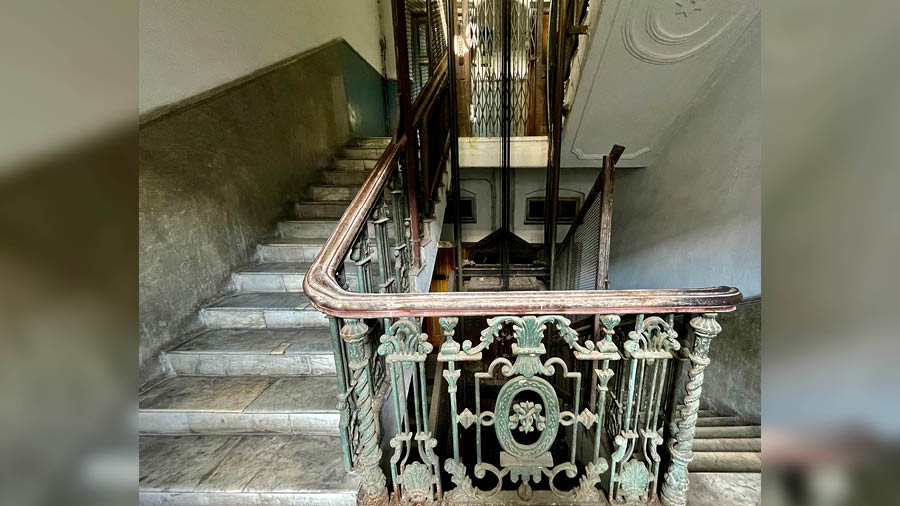
Palace Court was created when Calcutta Electric Supply was not plugging lines into just about every apartment
So, as I am sitting in Vien’s drawing room, I can sense the mahaul. This is no drawing room in the formal sense; it is an experience; it is an age. The word is ‘genteel’. It is a world where the bearer must have materialised in blancoed keds at 4pm with a wooden tray canopied with light linen, knocking gently on the bedroom door with ‘Memsahib, afternoon chai!’ Or the 6pm piano from the other room would have wafted Handel. Or an excited neighbour chattered on their evening walk through this U-shaped property (that someone said was designed to imitate equine footwear for good luck).
I had ventured to Vien for an architectural recce but the conversation detoured. I could have squeezed the last architectural niggle out of him to complete my prescribed 1,200 column-words, but I abandoned the idea for an unusual reason: Vien’s diction. It is the way he spoke; it is about what he said. He spoke the Queen’s English; he exercised the ‘le mot juste’ (the most appropriate word); he turned to French to make a point; he savaged his adjectives. By the 13th minute, the word that my subconscious periscoped for my attention was ‘tehzeeb’.
So, I ask Vien a lazy question with diverse possibilities: “What was it like to live here 61 years ago when you moved in as a 17-year-old?” For the next many minutes, Vien hands out a stenography drill. “What times! I had come from staying on the first floor of the Oberoi Grand with our family room opening out on the long balcony on Chowringhee because my father and uncle were partners of the great ‘MS’ (Oberoi, which he expects me to get). After the partnership dissolved, we moved to Spence’s Hotel for a few years; from there I moved to Palace Court and thereafter have not felt the need to move. There was perhaps no city like Calcutta in this part of the world at that time; there was wealth, there was class; there was commerce; there was cosmopolitanism. It was a slice of the liberal world and right at the heart of that oyster sat Palace Court. We were not more than 150m from Grail Club — the Vatican of the Anglo Indians, so to speak — so each evening you caught the drift of what the crooners would be singing. You got the social temperature of the evening without moving out of the drawing room. Park Street was the swingiest place this side of the Suez and each weekend we had our own party at Palace Court — peopled on the dance floor by the Armenian Catchatoos, Dilip Chatterjee of Bata, Mr Chandy (who came from USA in the winter), the Framjees, the Dadinas, the Lakins, the Carrs, the Myers, the executives from Gillanders, and the bachelor boys from the ITC chummery. We got the crooners in after their Park Street gig and they would come with their drums; we contributed the piano, we didn’t need mikes and each of our larger apartments could host 80 for cocktails at a short notice without heavy-lifting any furniture.”
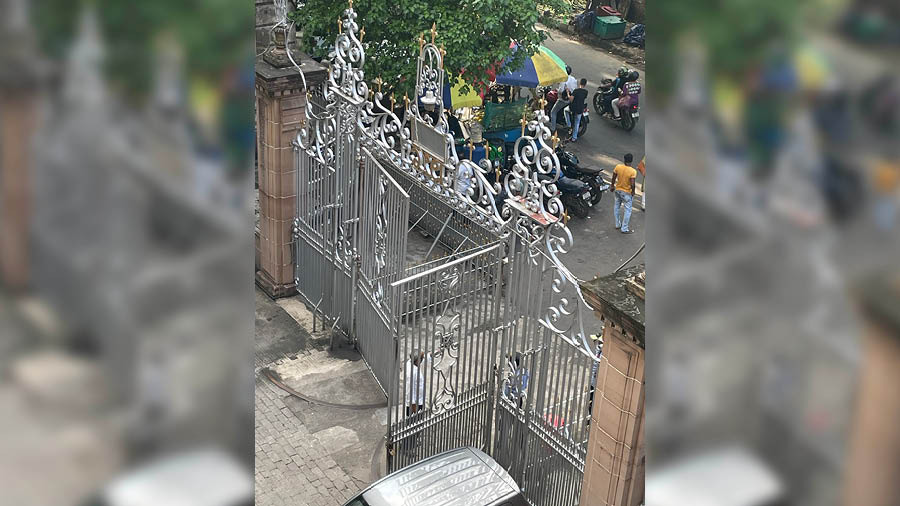
The denizens of Palace Court qualified their address Manhattan-ishly as ‘The Upper End of Kyd Street’,
I ask Vien about the denizens. “When I came here as a teenager in the early Sixties, there was Lord Ezra’s bungalow beside us, beyond that was the police commissioner’s bungalow and right on the other side was the seamier side. So Kyd Street had two diametrically opposite personalities. We diplomatically qualified our address Manhattan-ishly as ‘The Upper End of Kyd Street’, as distinct from the Rex Bar and the Evergreen Hotel at the other end. And since you got me started on this, no mention of Kyd Street would be complete without a reference to our Anglo-Indian lady — a copy of Elizabeth Taylor gone wrong — who owned these premises. She presided with an imperious air in her open rickshaw; her baby doll frock coupled with her hair-do (bouffant) became a signature in the neighbourhood; her rickshaw puller doubled as the bouncer and trade intermediary after dusk; international sailors generally dropped anchor at the port and her premises. When I wrote my book Calcutta, Queen of the East five decades later, her personality had grown in my mind to the point that she occupied two chapters.”
Then came the slow dissolve. The seminal points were two (Vien’s opinion): the coming of the MLA Hostel (the architecture was a boxed ‘monstrosity’, the quality of street language declined and spitting betel juice every second sentence became a reflex action). In 1977, a new government came into power with “a concerted agenda to blot out anything to do with colonial entertainment”. The vacant apartments were not re-occupied; it became increasingly difficult to run into familiar faces on the stairs; more than three-fourths of Palace Court homes are vacant (say insiders); residential premises are being occupied by commercial offices with no emotional lien on the neighbourhood; the whirr of generators muffled out Nat King Cole; an arthritic tenant moves out once in three weeks with a chair placed on each floor because there is no elevator. Vien’s three-word commentary on five decades: “A sad ageing.”
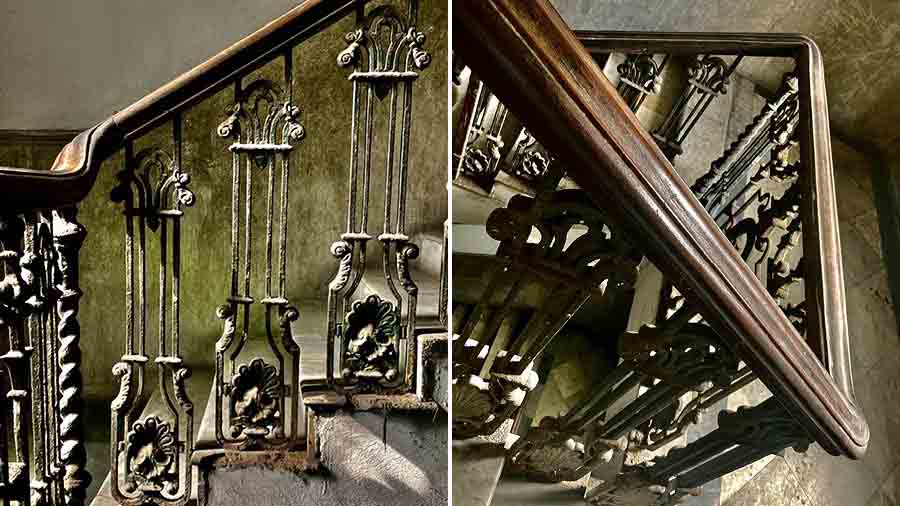
Tenant Vien’s three-word commentary on five decades of Palace Court’s decline: “A sad ageing”
And yet, the building survives. There is no yellowed KMC 'Bipodjonok’ metaled notice and the grilled gate with metalled ‘1926’ at the crest appears to have been painted silver last week. The story goes that someone told the landlord that ‘Gate ekdum Raj Bhavan jaisa!’ and that inspired such a rush of owner pride that even though the building may not have been painted for ages, the entrance remains sparklingly selfie-worthy all the time.
I walk onto Kyd Street and attempt to record this Raj Bhavan-wannabe. The security guard jumps to his feet with the alertness of an original software that has detected malware: “Photo mat leejiyega!”
A city ages when it ceases to proudly showcase one of its best and shoos off well-meaning admirers instead. Vien was right. He has aged gracefully; the building could have done better.
